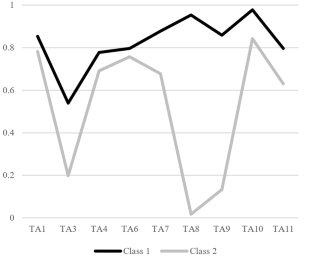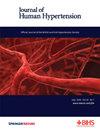指南建议对您有何作用?患者对动脉高血压治疗方法有效性的看法
IF 3.4
4区 医学
Q2 PERIPHERAL VASCULAR DISEASE
引用次数: 0
摘要
尽管动脉高血压是一个极易改变的风险因素,在实施以生活方式为基础的治疗方法后,发病率会显著降低,但近半数动脉高血压患者的血压仍处于高血压范围内。S3 指南的建议与实施之间存在很大差异。在这项抽取了 160 名动脉高血压住院患者的横断面研究中,我们评估了患者对治疗指南中推荐的二级预防治疗方法的看法。此外,我们还使用心理测量问卷来评估预防因素。我们进行了潜类分析,以确定患者观点的模式,并检验了性别、年龄、受教育年限、体重指数、精神病理学和血压方面的群体差异。结果发现了两个潜在类别:第一类倾向于认为所有建议的治疗方法都有帮助,反映了血压正常的人。第二类倾向于认为有关减轻体重、戒烟戒酒的建议效果较差,包括轻度高血压患者。在社会人口学参数方面,等级差异没有统计学意义。我们还进一步研究了治疗方法的评估,结果显示社会支持是最有效的方法。总之,血压持续升高可能与对治疗方法的认知较差有关,而这种认知较差又导致治疗方法无法实施。此外,以患者为中心的治疗计划和共同决策等概念似乎是治疗这类人群二级预防的核心。本文章由计算机程序翻译,如有差异,请以英文原文为准。


How do the guideline recommendations work for you? Patients’ perceived effectiveness of therapeutic approaches in arterial hypertension
Blood pressure remains in the hypertensive range in nearly half of those affected by arterial hypertension despite it being an extremely modifiable risk factor, whereby morbidity decreases significantly upon implementation of lifestyle-based therapeutic approaches. There are significant discrepancies between the S3 guideline’s recommendations and its implementation. In this cross-sectional study sampling 160 inpatients with arterial hypertension, we assessed patients’ perceptions of secondary prevention therapeutic approaches recommended to them within treatment guidelines. Additionally, we used psychometric questionnaires to assess prevention factors. We conducted a latent class analysis to identify patterns in patients’ views, and tested for group differences regarding gender, age, education years, body mass index, psychopathology, and blood pressure. Two latent classes could be identified: Class 1 tended to perceive all recommended therapeutic approaches as helpful and reflected individuals with high-normal blood pressure. Class 2 tended to view recommendations regarding weight reduction, and cessation of nicotine and alcohol use, as less effective and included those with mild hypertension. There were no statistically significant class differences regarding the socio-demographic parameters. We further examined the evaluation of therapeutic approaches independent of classes, with social support reported to be the most effective approach. In conclusion, persistently-elevated blood pressure may be linked to poorer perceptions of therapeutic approaches which are then not implemented. Furthermore, patient-centered treatment planning and concepts such as shared decision-making appear to be central in treating this population regarding secondary prevention.
求助全文
通过发布文献求助,成功后即可免费获取论文全文。
去求助
来源期刊

Journal of Human Hypertension
医学-外周血管病
CiteScore
5.20
自引率
3.70%
发文量
126
审稿时长
6-12 weeks
期刊介绍:
Journal of Human Hypertension is published monthly and is of interest to health care professionals who deal with hypertension (specialists, internists, primary care physicians) and public health workers. We believe that our patients benefit from robust scientific data that are based on well conducted clinical trials. We also believe that basic sciences are the foundations on which we build our knowledge of clinical conditions and their management. Towards this end, although we are primarily a clinical based journal, we also welcome suitable basic sciences studies that promote our understanding of human hypertension.
The journal aims to perform the dual role of increasing knowledge in the field of high blood pressure as well as improving the standard of care of patients. The editors will consider for publication all suitable papers dealing directly or indirectly with clinical aspects of hypertension, including but not limited to epidemiology, pathophysiology, therapeutics and basic sciences involving human subjects or tissues. We also consider papers from all specialties such as ophthalmology, cardiology, nephrology, obstetrics and stroke medicine that deal with the various aspects of hypertension and its complications.
 求助内容:
求助内容: 应助结果提醒方式:
应助结果提醒方式:


